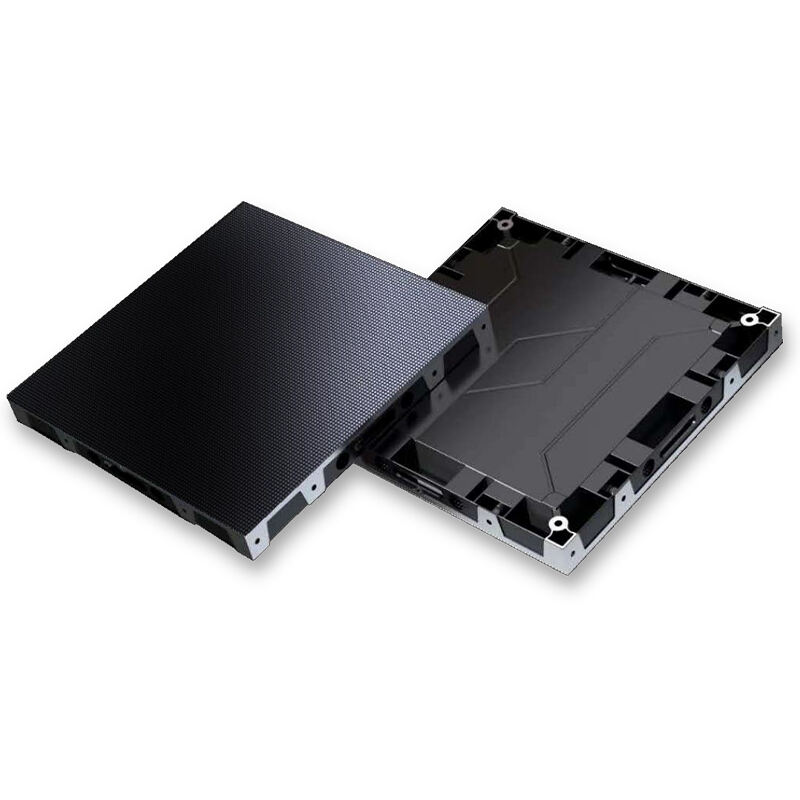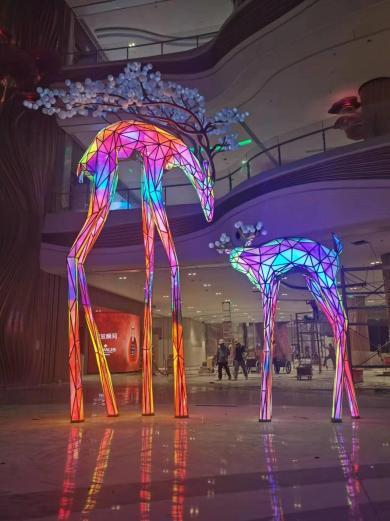LED display: a comprehensive introduction from basic to high-end applications
Types and Components of LED Displays
Indoor vs. Outdoor LED Display Configurations
Indoor and outdoor LED displays vary significantly in their design to accommodate different usage scenarios. Indoor LED displays are crafted with lower brightness levels and higher pixel density to cater to environments with controlled lighting, making them ideal for close viewing distances required in settings like conference rooms or shopping malls. On the other hand, outdoor LED displays are constructed with robust enclosures to endure environmental challenges, including rain, direct sunlight, and harsh temperatures, ensuring visibility from long distances and durability in locations such as sports arenas and advertising billboards.
Single-Color to Full-Color LED Screen Variations
The choice between single-color and full-color LED screens depends on the application and the visual impact desired. Single-color LED screens, often employed for basic messaging and signage, are cost-effective and serve straightforward communication purposes efficiently. In contrast, full-color LED displays provide a more immersive and detailed visual experience necessary for vibrant advertisements and dynamic video content. The technological variations available in full-color screens allow businesses to target diverse needs, enhancing everything from simple alerts to powerful marketing campaigns.
Core Components: LED Matrix and Control Systems
Understanding the core components of LED displays is essential for selecting the right system for your needs. The LED matrix, a grid of LED modules, forms the primary visual element, enabling high-detail display capability. This intricate arrangement is responsible for the sharpness and clarity of the images and videos presented. Control systems play a vital role in aligning the visual input with the display matrix, ensuring seamless performance and synchronization. Whether for advertising, events, or information dissemination, grasping the functionality of these core components can aid in choosing a display that meets the specific requirements of your application.
Technical Features Driving LED Display Performance
High Brightness and HDR Compatibility
LED displays, particularly those used outdoors, require a high brightness level quantified in nits. Displays can reach up to 5000 nits to ensure visibility under direct sunlight. Incorporating High Dynamic Range (HDR) compatibility significantly enhances the visual output by improving contrast and color accuracy. This feature is especially critical for creating immersive viewing experiences in advertising displays and event presentations. The adoption of high brightness and HDR technologies has become an industry standard to elevate LED display performance in competitive markets.
Pixel Pitch and Resolution Standards
Pixel pitch is a vital technical feature that refers to the distance between individual LEDs—smaller pixel pitches enable higher resolution suitable for indoor environments. This is essential when delivering detailed imagery and information to audiences at close proximity. Resolution standards, such as 4K and 8K, are becoming increasingly popular for their ability to produce clear, high-definition images. Both retail and event applications benefit from finer pixel pitches, tapping into the market's growing demand for high-definition display solutions. These trends highlight the industry's shift towards maximizing image clarity and enhancing viewer engagement.
Energy Efficiency and Thermal Management
Modern LED displays are engineered to optimize energy efficiency, aligning with sustainability initiatives and reducing operational costs. As governments and organizations increasingly impose regulations on energy consumption, thermal management tactics, such as heat sinks and active cooling systems, are pivotal in maintaining displays' performance and longevity. Implementing effective thermal management ensures that LED screens operate efficiently under various conditions, minimizing the risks of overheating and maintaining their lifespan. The continuous innovation in energy efficiency and thermal management reflects the industry's commitment to environmental responsibility and cost-effectiveness.
Applications: From Basic to High-End Implementations
Advertising & Retail Digital Signage Solutions
In the realm of advertising, LED displays are transforming how retailers convey messages. Unlike static signs, digital signage solutions provide dynamic marketing, enhancing customer engagement. Retailers leverage LED screen displays to showcase eye-catching visuals that capture customer interest and increase sales. Reports show that consumers are 70% more likely to recall digital advertisements compared to traditional signage. Moreover, LED displays offer unmatched flexibility, allowing businesses to update content in real-time. This agility enables synchronization with promotional campaigns or inventory levels, making digital signage a cornerstone of modern retail strategies.
Event Production and LED Screen Rental Applications
LED screen rentals for events provide unparalleled flexibility, allowing organizers to captivate audiences with vivid visuals. As experiential marketing gains traction, the demand for LED rental screens has soared, especially for large-scale events. These displays are pivotal in transforming event spaces, creating immersive environments that elevates audience excitement. Reports highlight an uptick in audience engagement when LED screens integrate into event strategies. Whether for concerts, corporate events, or product launches, LED rental screens ensure vibrant, high-quality imagery that leaves a lasting impression on attendees.
Mission-Critical Uses: Traffic Control and Broadcast Studios
LED displays are indispensable in mission-critical settings such as traffic control centers and broadcast studios. For traffic management, these displays facilitate the real-time dissemination of crucial information, enhancing public safety and traffic efficiency. In broadcast studios, LED video walls serve as versatile backdrops, offering stunning visuals as well as real-time data displays for news and live shows. The reliability and clarity of modern LED technology make these applications possible, highlighting their vital role in environments where performance and resolution are non-negotiable.
Advanced Implementations and Future Trends
Video Wall Configurations for Immersive Experiences
Video wall configurations, composed of multiple LED display screens, create immersive experiences suitable for gaming, presentations, and advertisements. This format enhances engagement by integrating content seamlessly across screens, providing viewers with a captivating visual immersion. Increasingly adopted in corporate environments, video walls facilitate improved collaborative opportunities and interactive presentations, making them a powerful tool in modern business settings.
Smart City Integration and DOOH (Digital Out-of-Home)
Smart city architectures are increasingly incorporating LED display technologies to enhance urban living through public information dissemination, advertising, and navigation. These Digital Out-of-Home (DOOH) campaigns utilize LED screens to captivate urban audiences with pinpointed messages in bustling environments. The interconnected nature of smart city technology sets a robust foundation for the evolution of public display systems, promising a future of dynamically improved urban communication.
Micro-LED and Transparent Display Innovations
Micro-LED technology is pivotal in the next evolution of display mechanisms, offering higher resolutions with a promise of reduced energy consumption. These displays provide sharp, bright images while maintaining efficiency—an exciting prospect echoed by various industry research reports. Simultaneously, transparent displays are unveiling new possibilities for advertising and inventive retail designs, seamlessly combining aesthetics with functional use. Staying updated with these technological advancements helps businesses position themselves as leaders in innovative display solutions.







 Hot News
Hot News